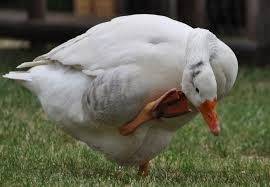Stamp: Heinz Sielmann 1917-2006 (Germany, Federal Republic 2017)
Heinz Sielmann 1917-2006 (Germany, Federal Republic 2017)
08 June (Germany, Federal Republic ) within release Heinz Sielmann goes into circulation Stamp Heinz Sielmann 1917-2006 face value 45 Euro cent
| Stamp Heinz Sielmann 1917-2006 in catalogues | |
|---|---|
| Michel: | Mi: DE 3318 |
| Yvert et Tellier: | Yt: DE 3103 |
Stamp is horizontal format.
Also in the issue Heinz Sielmann:
- Stamp - Heinz Sielmann 1917-2006 face value 45;
- Stamp - Heinz Sielmann 1917-2006 face value 45;
Stamp Heinz Sielmann 1917-2006 it reflects the thematic directions:
Animals are multicellular, eukaryotic organisms of the kingdom Animalia (also called Metazoa). All animals are motile, meaning they can move spontaneously and independently, at some point in their lives. Their body plan eventually becomes fixed as they develop, although some undergo a process of metamorphosis later on in their lives. All animals are heterotrophs: they must ingest other organisms or their products for sustenance.
Birds (Aves), a subgroup of Reptiles, are the last living examples of Dinosaurs. They are a group of endothermic vertebrates, characterised by feathers, toothless beaked jaws, the laying of hard-shelled eggs, a high metabolic rate, a four-chambered heart, and a strong yet lightweight skeleton. Birds live worldwide and range in size from the 5 cm (2 in) bee hummingbird to the 2.75 m (9 ft) ostrich. They rank as the class of tetrapods with the most living species, at approximately ten thousand, with more than half of these being passerines, sometimes known as perching birds. Birds are the closest living relatives of crocodilians.
A camera is an instrument used to capture and store images and videos, either digitally via an electronic image sensor, or chemically via a light-sensitive material such as photographic film. As a pivotal technology in the fields of photography and videography, cameras have played a significant role in the progression of visual arts, media, entertainment, surveillance, and scientific research. The invention of the camera dates back to the 19th century and has since evolved with advancements in technology, leading to a vast array of types and models in the 21st century.
A goose (pl.: geese) is a bird of any of several waterfowl species in the family Anatidae. This group comprises the genera Anser (grey geese and white geese) and Branta (black geese). Some members of the Tadorninae subfamily (e.g., Egyptian goose, Orinoco goose) are commonly called geese, but are not considered "True Geese" taxonomically. More distantly related members of the family Anatidae are swans, most of which are larger than true geese, and ducks, which are smaller.
A photographer (the Greek φῶς (phos), meaning "light", and γραφή (graphê), meaning "drawing, writing", together meaning "drawing with light") is a person who uses a camera to make photographs.





